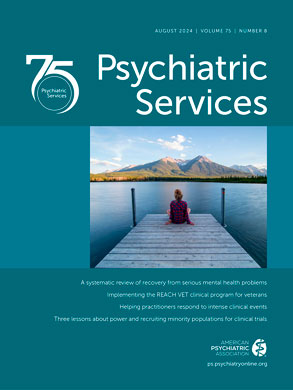Although this is a second edition, it is an entirely different book from the first edition. The first edition of Mental Health and Productivity in the Workplace was directed at managers; the collection of expert articles in Mental Health and Productivity in the Workplace: A Handbook for Organizations and Clinicians covers issues that arise in work settings, in Wall Street Journal articles, in treatment discussions, and probably in lawsuits against mega-companies that lock workers out, or even in.
Some articles in the collection will interest managers, whereas others are more likely to attract psychiatrists who deal with work situations (or would like to), occupational physicians who confront these problems on a daily basis, or the kind of business leaders who think about how systems work rather than whom to blame. The subjects of the articles are the venue of consultants, and most of the authors (all but two) are psychiatrists who are easily identified as consultants in the business areas they are discussing. They are professionals with the dual expertise and hands-on experience to translate ideas from two complex and philosophically disparate disciplines into commonsense explanations and policy advice.
Section 1 covers the relationship between the workplace and mental health. It includes chapters that are essential in a book covering this entire field: a history, a clear and necessary description of provider roles and systems of care, and a summary of efforts to measure productivity and explain the social costs of mental illness.
The remainder of the book, in three sections, covers work concerns, workers, and work organizations. The section on executive development and the section on executive distress and organizational consequences address mainly executive coaching and organizational intervention. Both provide excellent discussions of personality. The article on job loss should be read by every psychiatrist who has encouraged a patient to take time off. The articles on work organizations cover organizational change, psychiatric illness, violence, workers' compensation, and ethics. Most likely to attract managers is Chapter 14—"Psychiatric Causes of Workplace Problems." This article lists common work problems, mental and life situations that cause these problems, and how to assess, intervene, and prevent. A lovely subtitle, "Investigating and Understanding the Problem," removes subjectivity and blame by giving authoritative direction that could move managers beyond the countertransference muddle that so often immobilizes them: "When an employee exhibits job performance problems, it is the responsibility of the supervisor to address the situation. The supervisor first documents the problem and then discusses the issues with the employee." The next chapter, "Emotional Crises in the Workplace," consists of 16 pages that should be condensed, laminated, and kept in every manager's pocket. It opens with a list of workplace disasters that sound like the Passover Seder, but each potential trauma receives a paragraph on assessment, intervention, and prevention marked by helpful simplicity and good case examples. There is even a chapter on overseas assignments and a description of the Myers-Briggs personality test.
The chapter on violence in the workplace should be included in every new manager's orientation packet. It provides psychologically informed guidelines for action. Also appealing to managers would be the article, "Workplace Forensic Psychiatry." Although it covers only the Americans With Disabilities Act (ADA) and the Family Medical Leave Act (FMLA), it provides functional definitions of terms such as "qualified individual" and "reasonable accommodation" that are the cause of endless arguments. The legal detail presented may not appeal to a manager, but given the assumptions I hear when psychiatrists talk about the ADA, this material should be reprinted in widely distributed psychiatric publications. Other articles have special strengths for specific audiences. "A Winning Corporate Culture" and "Comprehensive Overview of Organizational Change" lack specific guidance for managers helping workers facing change but constitute a thoughtful read for clinicians who need to better understand how it feels to simply have "a job." An article on psychiatric fitness-for-duty examinations is a comprehensive source on fitness examinations but is unlikely to improve the tensions between the forensic examiner and the treating physician over the patient and the care.
Heavily skewed to worker's compensation, with much less on disability, an article titled "Disability and Workers' Compensation" defines important differences between treatment and consultative roles and reminds occupational reviewers that "It is important to remember that many physical impairments have prominent emotional components that can result from, exacerbate, or even cause disability." Their statement, "A treating physician must not become a patient advocate" could have been expanded with a discussion of what happens to people psychically and pragmatically in anticipation of, and during, an absence from the workplace due to disability.
In the last section a chapter covers psychiatric conditions and treatments. This chapter includes excellent descriptions of the problems employees with depression, obsessive-compulsive disorder, paranoia, and borderline traits present in work situations and the treatments needed. It would alert treating psychiatrists to issues their patients may be confronting or causing at work. The not-quite-aptly named chapter "Psychosis" is a 20-page excellent—but whirlwind—tour of affective illness. It explains the impact on the workplace of the dysfunctional and bizarre behaviors that are part of serious mental illness among both high- functioning and chronically impaired workers. The suggestions about accommodations apply largely to the chronically impaired. An article called "Drugs" contains an excellent review of the epidemiology and cost of drug use at work. The discussion of intervention is general and would require professional interpretation, but every clinician should read the sample corporate drug policy document they provide. It is a window into the world in which their patients function.
The book's final chapter, "Emotion and Illness," in 16 pages clarifies subjects that justify a whole book—pain, somatization, malingering, hypochondriasis, psychiatric disorders with physical symptoms, emotional aspects of physical disease, and toxic and organic syndromes. The discussion of their workplace impact is condensed into a page but would allow even an unsophisticated manager to come away with a balanced and sympathetic view of what the worker might be experiencing. The section on fatigue, pain, and subjective diagnoses might give the wrong impression to mangers—or clinicians—who still see these as rheumatologic or infectious rather than the brain disorders they likely represent. Given emerging information, this topic surely deserved a few more pages.
As experts, many of the authors jump into their subject without realizing they are presenting a world that is unfamiliar to both clinicians and managers. The book's editors initially prepare the way with a thoughtful discussion of the barriers to applying psychiatric principles to workers' needs via the inflexible machinery that work organizations offer. Theirs is a tough job—explaining in 24 pages what psychiatrists can do for the workplace and how the workplace should use psychiatry. Their themes—recognizing psychological issues among workers, the role of various workplace structures, and the technical structure of help—are well presented, but they try to cover too much technical material on treatment technique and psychiatric theory, thereby missing an opportunity to advance the expert role psychiatrists should have as traffic director (assessment and triage) in workplace organizations and disruptions. The index will not frustrate if you have a question. Many references are worth pursuing but not annotated. There are useful forms hidden in chapters.
My "missing persons" list for this book is threefold. First, there could have been a discussion of information exchange. Second, the book could have included a discussion of the fact that chronic illness—and psychiatric illness is the grand-daddy chronic illness—blurs the medical distinction between people with an illness who can work and function and those who cannot. Improvements in the treatment and course of chronic illnesses have diminished the medical role in disability decisions. More discussion of what disables and how to assess this within the context of treatment would have been helpful and would alert clinicians to the fact that even a few weeks' absence from work seriously affects identity, job tenure, and the illness itself. Finally, the book lacked a much-needed discussion of how to technically shape employee benefits to fit modern illness and how to address the advantages that would flow from integrating all work-related employee benefits at the point of clinical care. Benefit construction by consultants who have less knowledge even than employers—some my former claim managers and salespeople—is not acceptable. We are responsible for aggressively informing that process.

